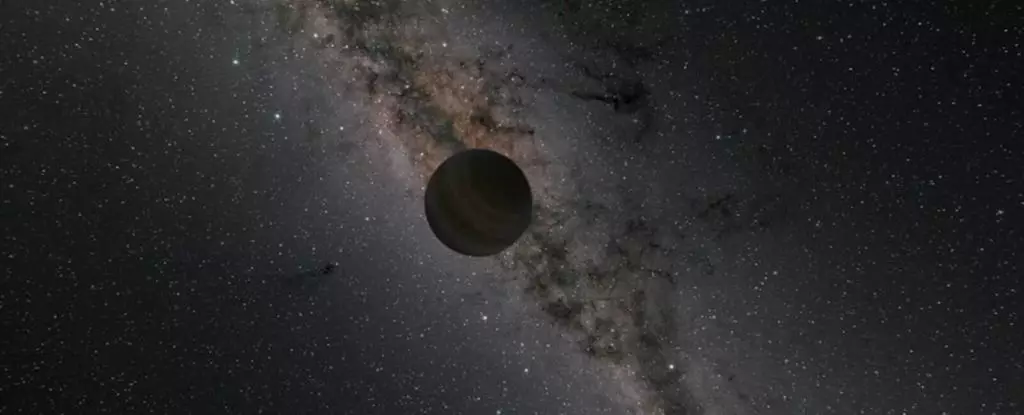In the vastness of the outer Solar System lies an unexplored wilderness, shrouded in mystery. The limited capabilities of our telescopes hinder our ability to observe and understand the strange objects that may exist in this remote region. The known part of this enigmatic realm is the Kuiper Belt, a field of small icy rocks extending beyond Neptune’s orbit, harboring dwarf planets such as Pluto, Eris, and Haumea. Beyond the Kuiper Belt lies the hypothetical Oort Cloud, a massive spherical collection of small rocks enveloping the entire Solar System, its true extent remaining unknown. It is from this distant realm that the long-period comets of our Solar System are believed to originate. However, hidden within this uncharted territory, there may be something even more extraordinary waiting to be discovered – alien planets.
Amir Siraj, a theoretical astrophysicist from Princeton University, has delved into the realm of possibilities and formulated calculations to estimate the potential existence of alien planets lurking undetected in the outer Solar System. His mathematical calculations provide tantalizing guesses about the number of alien planets concealed from our view. Siraj postulated that there could be 1.2 planets with a mass greater than Mars, 2.7 planets with a mass comparable to Mars, and 5.2 planets with a mass akin to that of Mercury. While these estimates are derived from educated assumptions, the notion of a solitary hidden world journeying from a distant star is undeniably captivating.
This line of inquiry arose with the discovery of free-floating or rogue planets, which were first published in 2000. These rogue planets have broken free from the gravitational bonds of their parent stars and now roam the galaxy independently. The precise frequency of such rogue planets is still uncertain, but advances in detection methods are enhancing our ability to identify these solitary wanderers, thus refining our estimations. Furthermore, the captivating aspect is that these nomadic planets are not destined to remain untethered forever.
Contrary to staying adrift indefinitely, these rogue planets have the potential to be ensnared by the gravity of passing stars. In a process known as gravitational capture, if a rogue planet ventures too close to a star, it can be pulled into orbit around it. Jupiter, for instance, is known to possess a penchant for capturing space rocks that cross its path. Curious about the likelihood of such an event occurring within our own Solar System, Siraj embarked on estimating the probability of a rogue planet becoming captured by the Sun’s gravity.
To perform this calculation, Siraj considered estimates of the number of rogue planets in the Milky Way and the percentage of stars likely to capture these nomads. Using this information, he determined the likelihood of rogue planets passing near our Solar System, within a range that would allow them to be captured by the Sun’s gravitational pull. Astonishingly, his calculations suggest that it is quite probable for a planet with a mass ranging from Mercury to Earth to be present in the outer reaches of our Solar System, dwelling in the cold darkness.
The implications of these findings are not only significant for our understanding of the outer Solar System but also raise intriguing questions about the existence of hidden alien worlds. Siraj stresses the importance of conducting further investigations to simulate and scrutinize the capture and retention of free-floating planets, as well as planets bound to other stars. Such simulations could provide insights into the distribution of orbital planes and positions of captured planets in the sky. Moreover, future research should explore additional observational techniques to confirm the presence of these captured planets.
Siraj also suggests that the Vera C. Rubin Observatory, presently under construction in Chile and expected to commence scientific operations in 2025, could play a critical role in spotting these elusive captured planets. If one of these planets happens to align favorably in the sky, the advanced capabilities of the observatory may enable their detection.
The outer reaches of our Solar System remain a tantalizing wilderness of untapped potential. The exploration of this mysterious frontier has led theoretical astrophysicist Amir Siraj to hypothesize the existence of hidden alien planets, concealed from our view. Through mathematical calculations, Siraj unveiled the possibility of planets with various masses, ranging from Mars to Mercury, lurking in the cold void. While further research and observations are needed to confirm these predictions, the quest for hidden alien worlds continues to captivate and challenge our understanding of the universe. With each exploration and discovery, we inch closer to unraveling the secrets of the enigmatic outer Solar System.


Leave a Reply